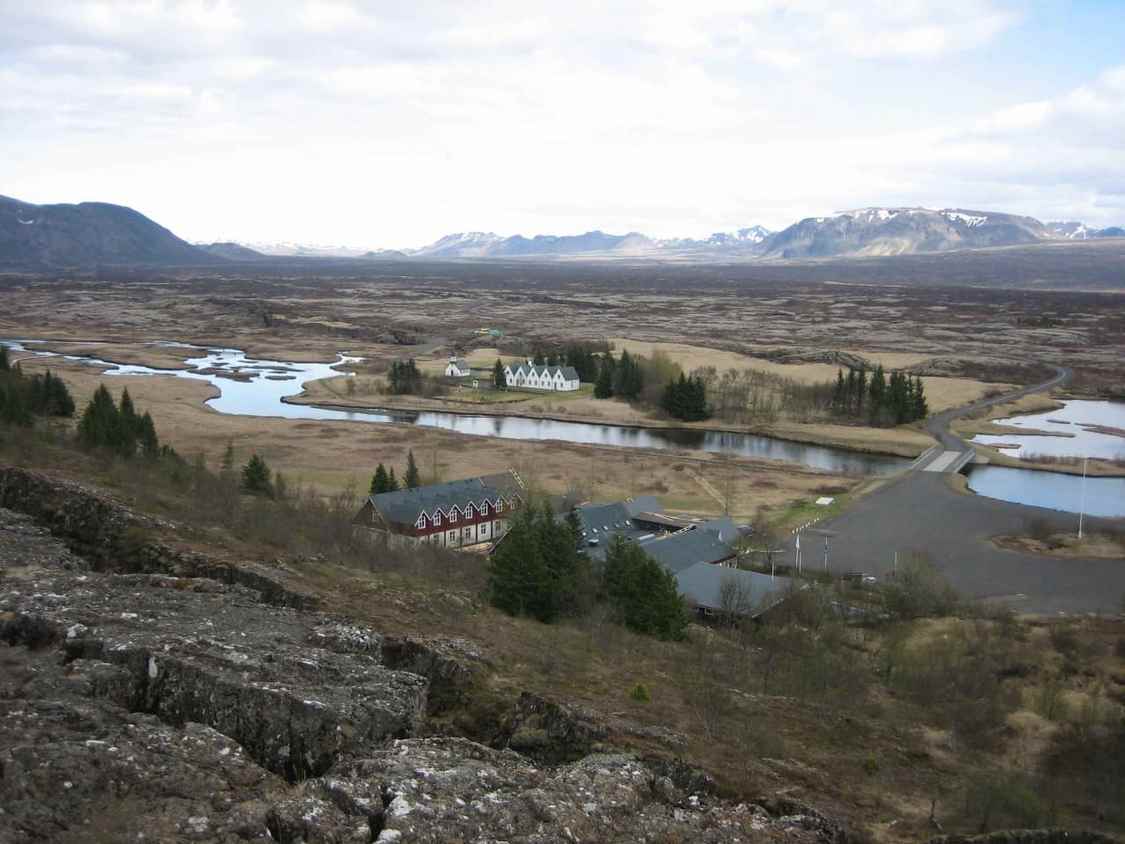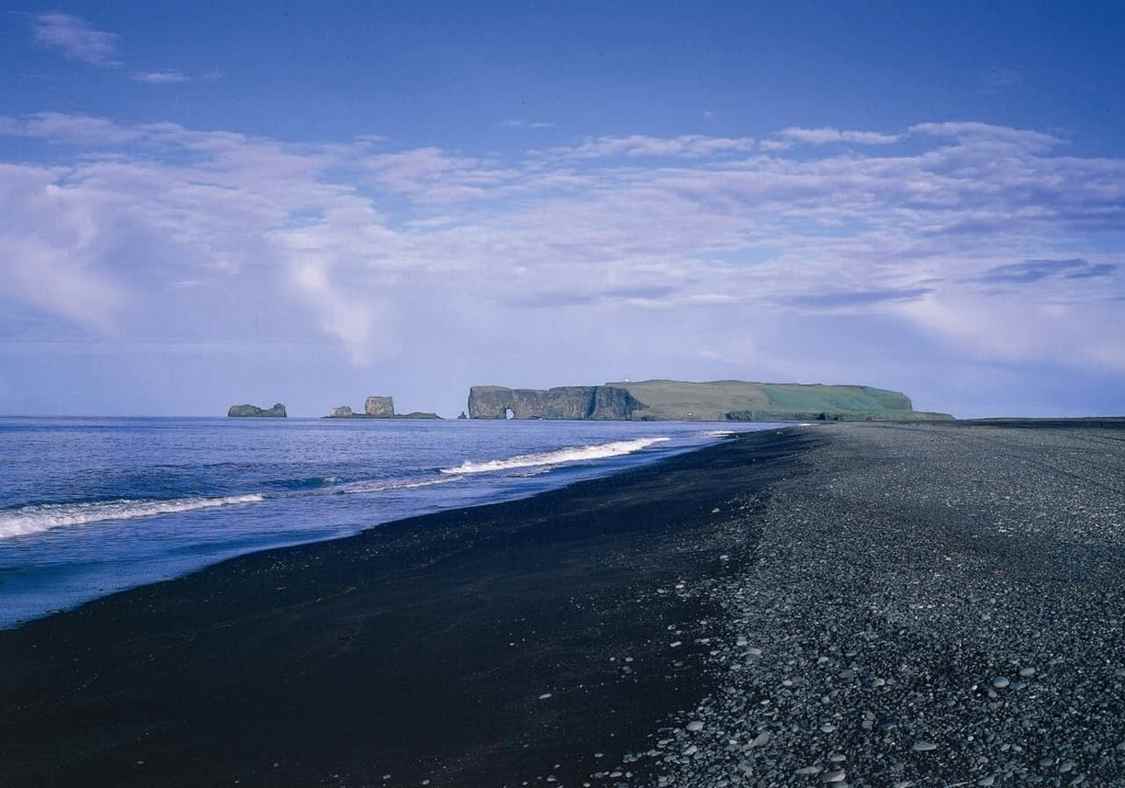Þingvellir National Park
As one of Iceland's most famous historical sites, Þingvellir is the location where the Icelandic parliament or assembly was first convened in AD 930 and continued to be held for nearly nine centuries until it ceased in 1798. Many events in the sagas also took place here. In 1930, it was designated as a national park. In 2004, Þingvellir was inscribed on the UNESCO World Heritage List.
Þingvellir is located on the northern shore of Iceland's largest lake, Þingvallavatn. The Öxará River runs through the national park, forming a waterfall at Almannagjá called Öxaráfoss. Along with Gullfoss waterfall and the geysers of Haukadalur, Þingvellir is part of Iceland's most famous tourist route, the Golden Circle.
Geysir Geothermal Area
Located on the Golden Circle tour route in Iceland, the Great Geysir (Stori-Geysir) is one of Iceland's most famous natural attractions. However, it has been dormant since it stopped erupting in 1916, with only one revival in 1935. Now, the highlight of the area is another geyser, Strokkur (The Churn), located 100 meters south of the Great Geysir. This area is a geothermal park situated above a massive boiling cauldron, featuring sulfur mud pots of strange colors, hissing steam vents, hot and cold springs, warm streams, and primitive vegetation, attracting numerous visitors. The Strokkur geyser erupts approximately every 10 minutes, with a spectacular white boiling water column reaching up to 30 meters.
Gullfoss
Gullfoss in southern Iceland is a combination of two waterfalls, with the upper waterfall having a drop of 11 meters and the lower one 21 meters. The riverbed at the bottom of Gullfoss is composed of rocks from the last ice age. On average, 109 cubic meters of water flow over the falls every second, with a record high of 2000 cubic meters per second during floods. In summer, the flow rate is 130 cubic meters per second, enough to fill an entire building in just 3 seconds. There have been various proposals to enhance its energy development potential, including hydropower development on the Hvítá River. Currently, the trails around Gullfoss may be closed, so it is best to check the Safetravel.is website to see if Gullfoss is open to visitors before planning your trip.
Reynisfjara Black Sand Beach
Reynisfjall is a tuff mountain located near the village of Vik, reaching up to 340 meters high. It originated from volcanic eruptions during the penultimate glacial period. The mountain features alternating layers of tuff, pillow lava, and columnar basalt dikes, presenting an irregular geological landscape. The Reynisdrangar rock stacks consist of 66-meter-high rock pillars rising from the sea, with geological structures similar to Reynisfjall. At Reynisfjara Beach, you can admire the beautiful basalt landscape of the southern mountains, and there is also a very beautiful cave called Hálsanefshellir. In recent years, even in the best weather, the waves have been exceptionally dangerous, leading to the deaths of many tourists. Therefore, visitors are advised to be cautious and maintain a safe distance from the sea.
Vestra-Horn
Iceland has many settled farms, one of the oldest being Horn. This farm was built by Hrollaugur, the son of Norwegian Earl Rögnvaldur. Many attractions and the Hornafjörður municipality are named after this farm. In both Icelandic and English, Horn means the same. The Horn area is located under the Vestra-Horn mountain, which stands at an elevation of 454 meters and is an interesting geological site mainly composed of gabbro and some granite. To the east of the mountain is a peculiarly shaped outcrop called Brunnhorn, which extends into the sea. Seals can often be seen leisurely sunbathing on the beach here, which is a delightful sight. During World War II, the Horn area became a base for British troops, and later a NATO radar station was established south of Horn. At Stokksnes, one can feel the power of the Atlantic Ocean as the sea crashes against the rocky coast with great force.
However, in recent years, even in the best weather, dangerous waves have inevitably appeared, leading to the deaths of many tourists. Therefore, visitors are advised to be cautious and maintain a safe distance to avoid danger.
Vatnajökull National Park
Established in 2008, Vatnajökull National Park encompasses the entire Vatnajökull glacier and its surrounding vast areas, including Skaftafell National Park in the southeast and Jökulsárgljúfur in the north. Currently, the national park covers 14% of Iceland's total area, making it the second largest park in Europe. As a general rule, national parks primarily serve as unique protected areas of natural or cultural heritage. Vatnajökull National Park is highly praised for its diverse landscapes formed by rivers, glacial ice, volcanoes, and geothermal activity.















